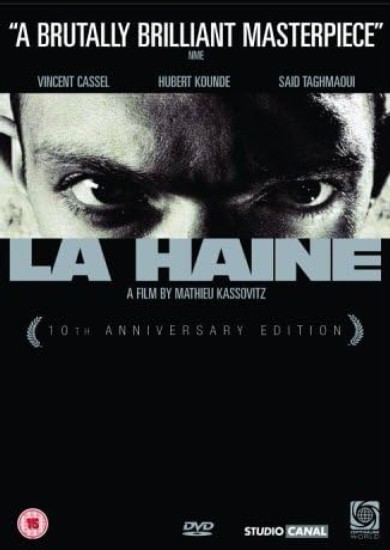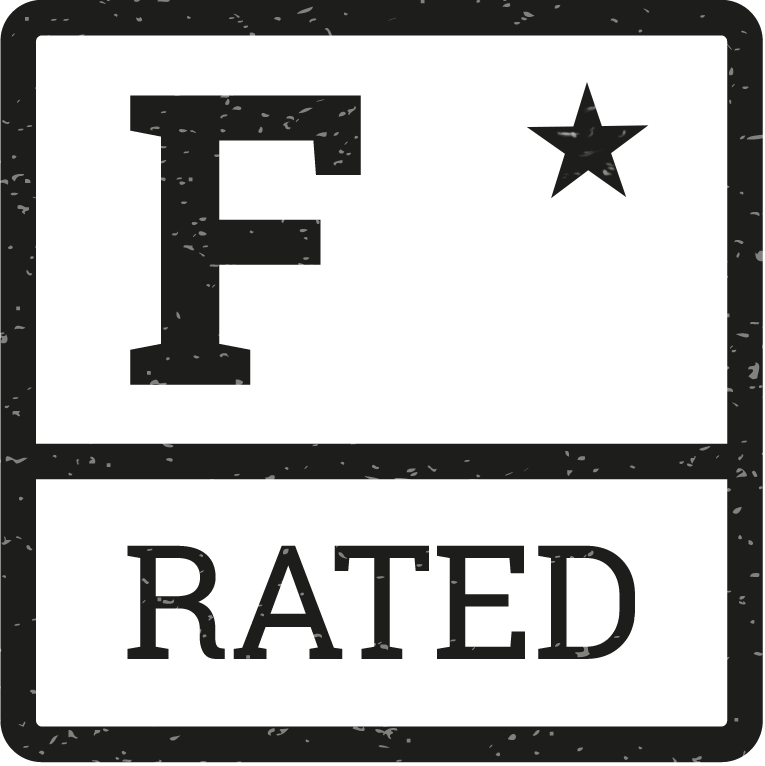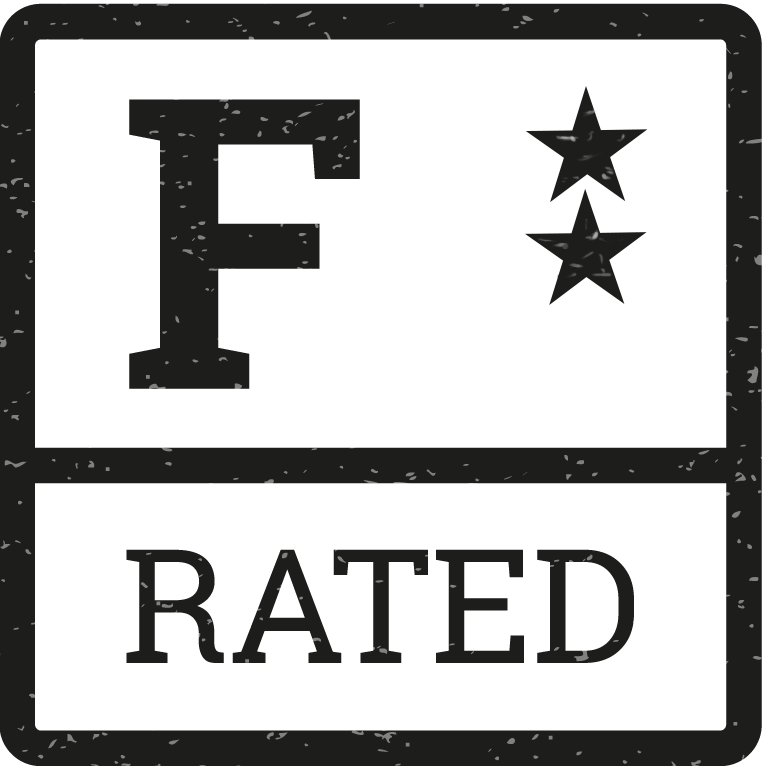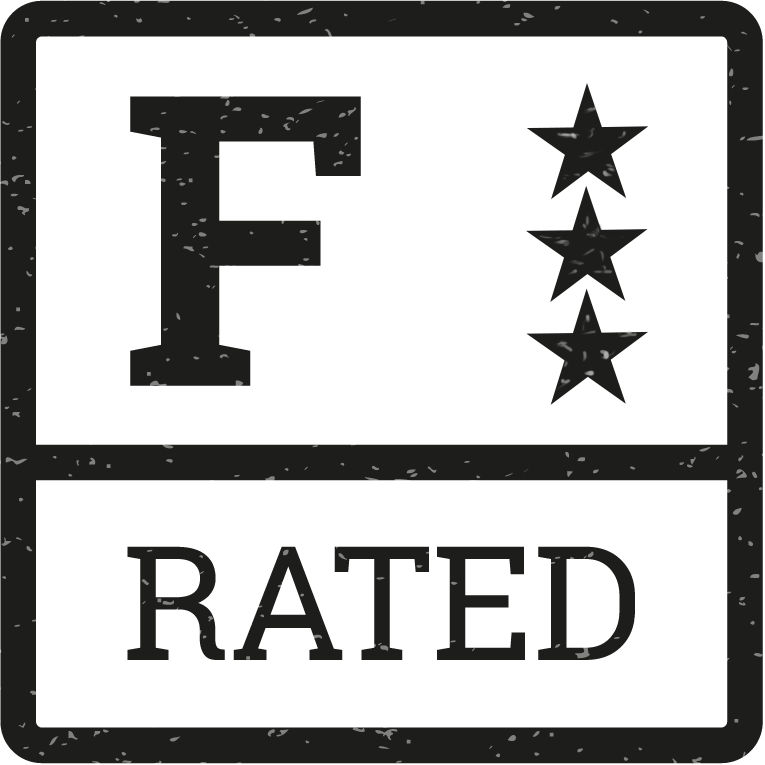La Haine
24 hours in the lives of three young men in the Parisian suburbs the day after a violent riot. This stark social study of violence, fear and hatred had a powerful impact on French society. Best Director Cannes 1995.
Film Notes
La Haine review – effervescent classic radiates with rage and comedy
Mathieu Kassovitz’s celebrated story of inequality in a Paris banlieue is a timely rerelease in the Black Lives Matter era.
Mathieu Kassovitz’s classic of banlieue rage has been rereleased after 25 years with a new urgency and relevance in the Black Lives Matter era. What comes across now isn’t the “hate” of the title, more the aimless, directionless comedy of three guys hanging around, bantering and squabbling about things such as which cartoon character is the most badass. It is touches like this which make you realise how very 90s it all is, similar to Tarantino and Trainspotting (with a nod to Taxi Driver’s “You talkin’ to me?” scene) but it also has a little something of the French New Wave, the world of Jacques Rivette’s Paris Belongs to Us, all of which influenced the later Americans. It’s a film about which I’ve had fluctuating views. Perhaps as a result of having watched it so much, I greeted the 10th-anniversary rerelease with some grumpy contrarianism. Now I think it simply looks superb.
The age of Jacques Chirac’s presidency dawns uneasily (an official portrait is glimpsed in one scene) and in a tough inner-city estate outside Paris, the neighbourhood is waking up to the grim aftermath of a violent protest against police brutality, which has put a man in hospital in critical condition. His friend Vinz (Vincent Cassel) is simmering with rage, threatening to kill a cop with the police-issue gun he’s stolen, a gleaming snub-nose Smith & Wesson revolver; meanwhile, he is hanging around with his friends Hubert (Hubert Koundé) and Saïd (Saïd Taghmaoui) with nothing much to do but wait for the next explosion of rage. There’s a gallery of well-known and (then) up-and-coming French actors in smaller roles: Vincent Lindon is a drunk bloke who turns up just as the trio is trying to steal a car; Philippe Nahon (who worked on Melville’s classic policiers and later became the totemic “Butcher” in Gaspar Noé’s movies) is the grizzled police chief who tries to break up a rooftop barbecue, Karin Viard is a Parisian art-lover – a rare female presence – and Kassovitz himself has a cameo as a neo-Nazi skinhead.
The effervescent energy of this film keeps foaming away under everything; especially under its most amazing sequence: as one guy blasts out music from his decks at the high window of a tower block, Pierre Aïm’s camera ethereally floats out over the rooftops looking down, a moment that departs from the tense mood of the scenes either side of it and has surely influenced the drone camerawork of Ladj Ly’s new banlieue film Les Misérables. (But Kassovitz didn’t have drones in 1995. How did he get that shot?)
Of all the figures in La Haine who stand out, the most startling is Vincent Cassel, making his breakthrough in his late 20s, a man on a hair-trigger with a face like an inverted triangle, sharp as a blade. The late critic Philip French described Cassel best, calling him “fiercely uningratiating”. It is Cassel who supplies the rocket-fuel of resentment; without him, Taghmaoui and Kounde might have been simply too laid-back, although again I’m not sure that Cassel is projecting “hate” as such. Our three musketeers are to come across some bizarre things on their travels, including a cameo from Tadek Lokcinski as an elderly Pole in a public toilet who emerges from a stall to tell them all about the importance of defecating regularly. There is also a very shrewd and disturbing scene in which two cops school a younger colleague in violent interrogation and the art of not going too far.
The movie is bookended with the famous non-joke about the guy who falls off a skyscraper and, as he falls, people can hear him optimistically murmuring: “So far, so good … so far, so good…” A brutal landing is imminent, the movie implies, a horrible violent reckoning of racial injustice. For 25 years since La Haine came, it seems as if the fall has been continuing and the definitive landing has still not happened, or rather that we get the fall, the landing, then another fall. The violent descent has been contained and normalised. It’s more a case of “So far, so bad … so far, so bad…” La Haine is an unmissable response to an unending emergency.
Peter Bradshaw, The Guardian, 11th September 2020.
5 Reasons Why “La haine” Is A Modern Masterpiece of French Cinema.
With the heritage of 1990s riots opposing police brutality and the inequality between race and class alike still very much alive, perhaps it is shameful that the controversial issues raised in La haine remain as relevant as they are. With the title derived from the phrase in the film: “Hate breeds hated” (“La haine attire la haine”), La haine is not only shockingly relevant in modern society, but in modern cinema as well.
La haine remains a renowned and significant example of modern French film, primarily for two related reasons: Firstly because it manages to perfectly capture the state of contemporary French cinema, whilst secondly expertly portraying the state of contemporary French society.
Furthermore, La haine also opened filmgoers’ eyes to a France unknown to many cinéphiles the world over while addressing social injustices and cunningly reversing age-old damaging stereotypes.
Finally, upon its release the film provided a new lease on life for French filmmakers with its fresh new aesthetic and the urgent pertinence of its subject matter. Here are five elaborations on why La haine is the most important film in modern French cinema:
1. American Influence on the Film and Culture
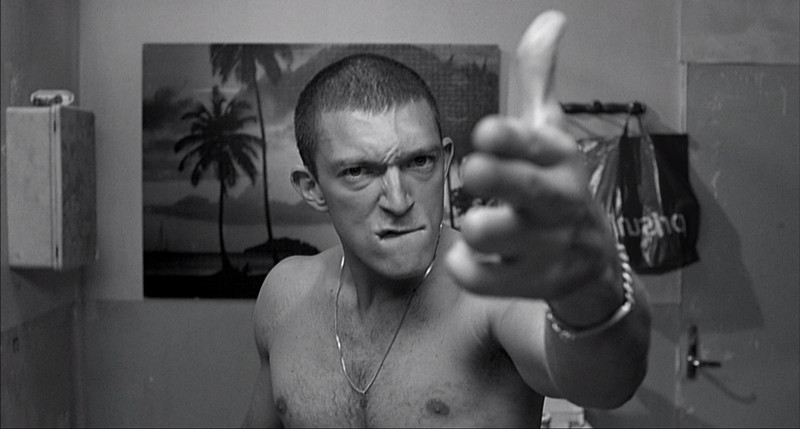
Regarding the state of French cinema at the time of the film’s release, director Mathieu Kassovitz remarked on the commentary track of La haine that the that the once-innovative French New Wave had become harmful to the evolution of French cinema in the 1980s. Interestingly, both La nouvelle vague and La haine drew inspiration from the same source; American cinema.
While the band of cinéphiles that pioneered the French New Wave found immense artistic value in the auteur cinema of the likes of Howard Hawks and Nicholas Ray, Kassovitz visibly borrows and pays homage to tropes of New Hollywood cinema—most notably Martin Scorsese’s Mean Streets—and contemporary hip-hop culture of 1970s and 1980s America.
There are two scenes in particular that showcase the uniquely Franco-American spirit of the film, starting with the scene where protagonist Vinz postures aggressively in front of his bathroom mirror, aping Robert De Niro’s iconic “You talkin’ to me?” monologue from Martin Scorsese’s Taxi Driver. What makes this sequence remarkable is Vinz’s Gallic appropriation of this classic morsel of American pop culture, translating the phrase into a very informal French “c’est à moi qu’tu parles!?”
The second scene features a cameo by DJ Cut Killer, playing a mix of KRS-One’s “Sound of da Police”, interspersed snippets of French hip-hop artists Assassin and Suprême NTM with the declaration “Nique la police” (“Fuck the police”), as well as samples of Édith Piaf’s “Non, je ne regrette rien”. This eclectic blend illustrates a clash between the classic idea of French cultural identity of yesteryear and the harsher, americanized reality of modern France.
Another trait lifted from American cinema of the era is the film’s “life in a day” structure also seen in features such as Spike Lee’s Do the Right Thing and Kevin Smith’s Clerks (another black and white film coincidently); both films that deal with issues of racial tension and adolescent ennui, respectively.
2. A France Unseen
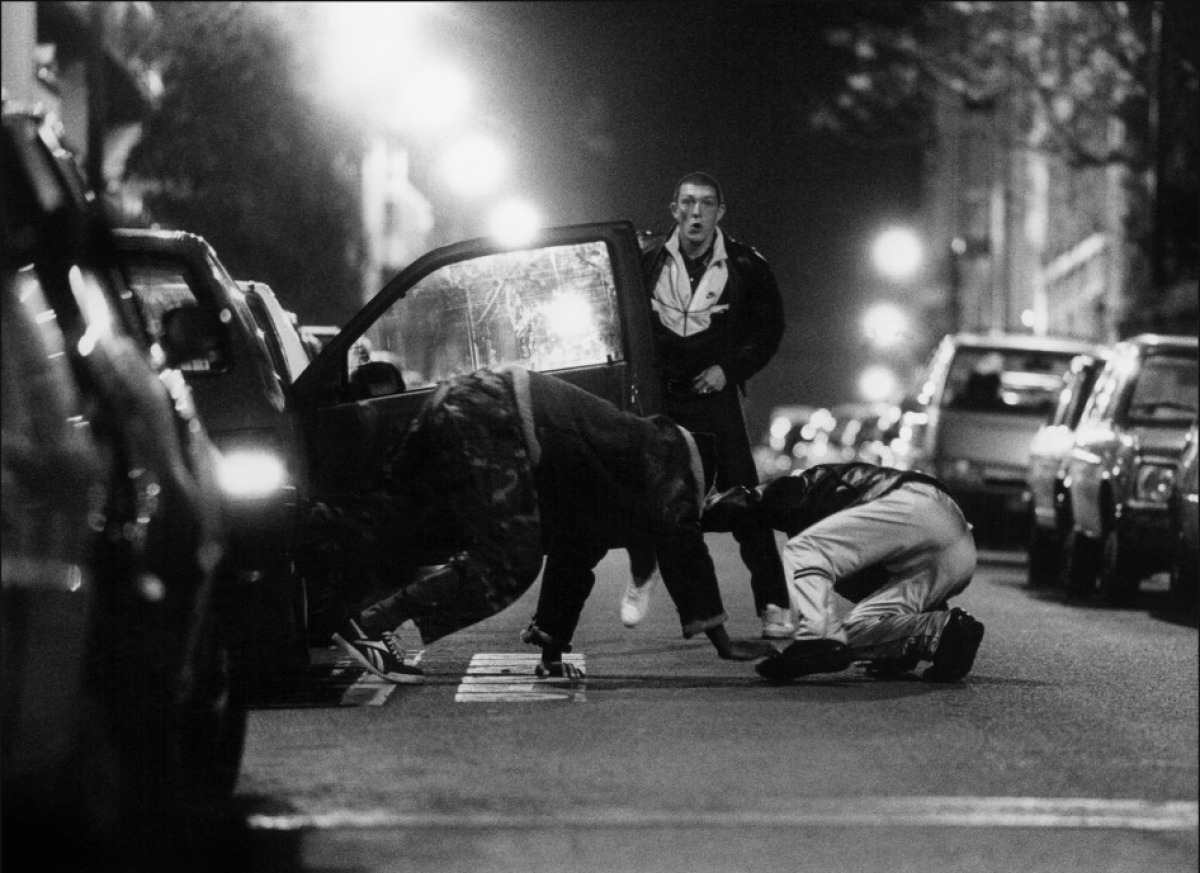
For decades, the global perception of French cinema was dominated by Gallic stereotypes of bourgeois-bohème Parisians, navel-gazing against the backdrop of the Champs-Élysées or a well-to-do café. La haine transports viewers from a familiar and luxurious Paris to its banlieues—suburbs, marked by housing projects and urban decay.
Early in the film when Saïd stands in front of the complex wherein Vinz resides, we’re shown dozens of apartments crammed and stacked claustrophobically together, the residents practically spilling out the windows to complain about the noise. The surrounding neighbourhood is a veritable assortment of vandalized concrete structures, deserted buildings and burnt shells of cars; far from the café society imagery international filmgoers had been fed on for years.
In terms of the cast, the three protagonists are all minority groups in French society. Saïd is an Arab Maghrebi, Hubert is Afro-French, and Vinz is Jewish. The documentation of their unique experience in what is essentially their country as much as it is any other French citizen’s is a crucial element in the film as they face adversity not only from police but from the manipulative media and far-right thugs as well.
3. Reversal of Stereotypes
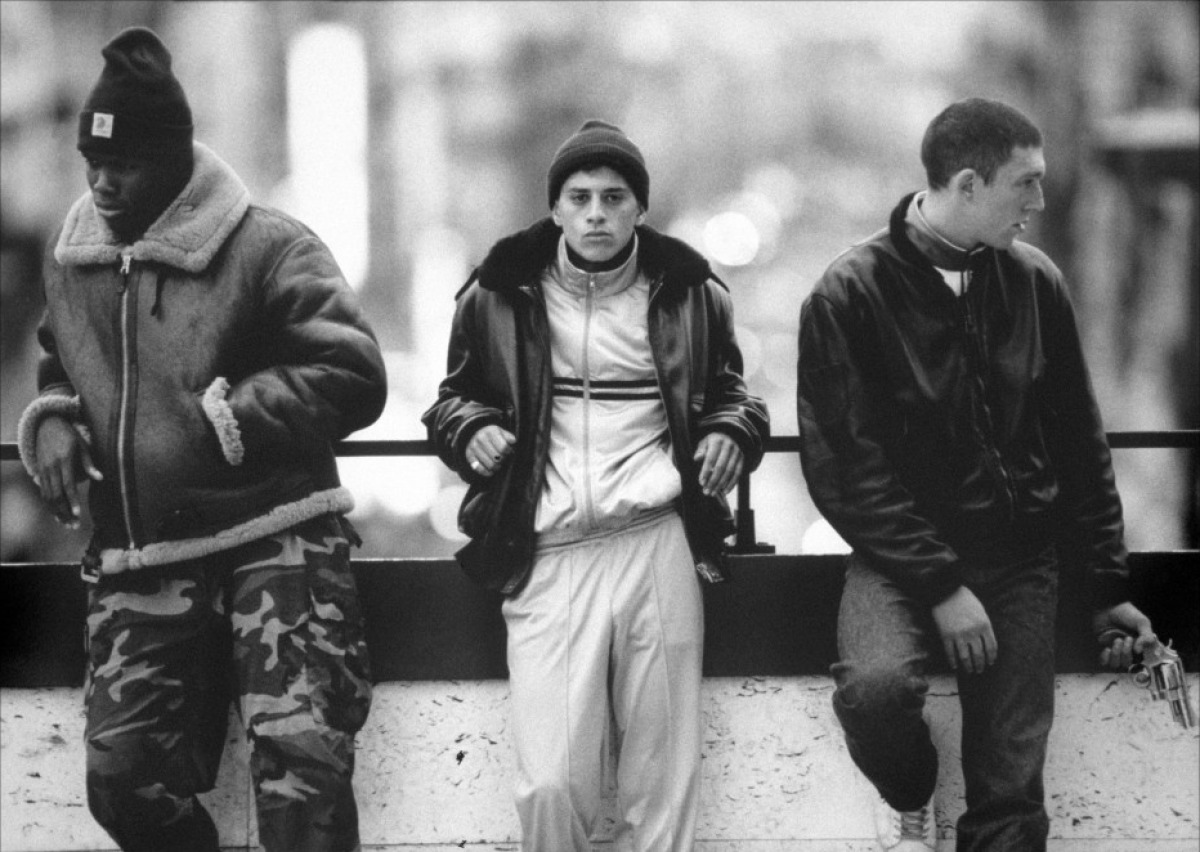
The use of a multicultural minority cast allows for the film to address certain harmful stereotypes. Saïd and Hubert, both of African origin, would be considered outsiders in the group and—in the eyes of right-wing xenophobes—problematic to French society.
However, Saïd is probably the most harmless, naive member of the trio; whereas Hubert is the most devotedly pacifist, with a clear moral code. Inversely, the Jewish Vinz defies the inflammatory stereotype of meekness and submissiveness by being the most volatile and arrogant of his friends.
A recurring theme with the character of Vinz is that while Caucasian are the most accepted into traditional French society among his friends, he feels especially disenfranchised. Although he has twice the privilege of his friends, this privilege is matched with unwarranted petulance and indignation.
Caught between two societies—that of the traditional, privileged French class and that of his friends who find themselves abandoned by this outdated definition—Vinz at one point makes a very telling remark where he asks Saïd if he wants to be the next Arab to be killed in a police station.
When Saïd says no, Vinz replies “me either”. Here we see him struggling to find his place on his marginalized friends’ side of the battle, and outdoing them in the process by plotting to kill a cop pending the death of their friend Abdel.
It could be said that as a young Jewish man, Vinz was raised on a heritage wrought with trials, tribulations and pronounced suffering, but he himself feels no connection to the persecution of his ancestors and seeks to align himself with it and channel his vengeful sentiments by putting himself in the shoes of the people currently marginalized the most in France; his foreign comrades.
Towards the end we see that Vinz’s volatile personality was but a facade, and when he attempts to assassinate a lowly skinhead he fails, sickened by the prospect. This, coupled with his decision to turn his revolver over to Hubert, is a clear indication of his realisation that he does not have the stake in the conflict he claimed to have.
4. Addressing Controversial Social Issues:
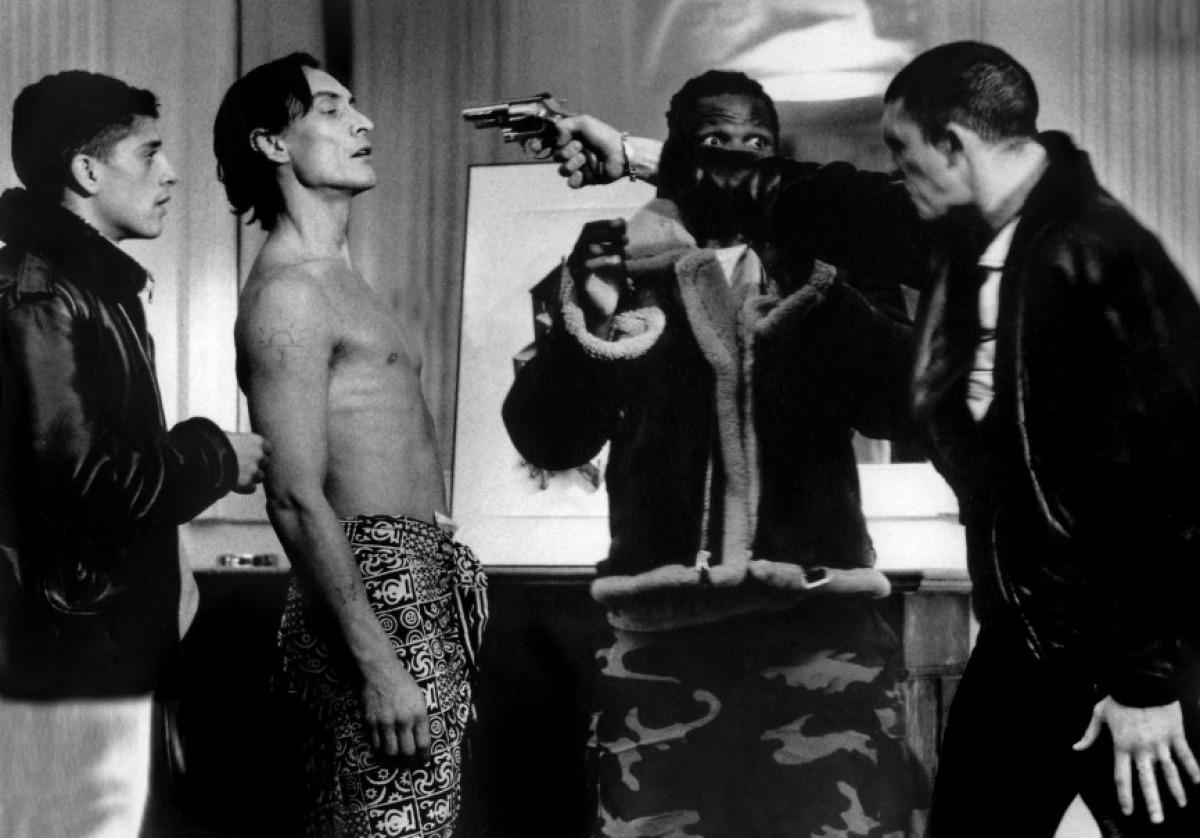
In La haine there is a quote, recited by Hubert, which serves as a bookend for the film:
It’s the story of a man who falls from a 50-storey building. As he falls, he repeats over and over to reassure himself: “So far so good, so far so good, so far so good.” But it’s not the fall that’s important – it’s the landing.
At the film’s conclusion the quote is revised to refer more specifically to a society that is in the same state of freefall as the man in the original analogy. The intention of the film is to portray the breaking point of a flawed system; an ultimate destination if things continue along their current trajectory.
La haine makes no effort to soften the urgency of the poverty and desperation experienced by the characters. Trapped by their surroundings, their existence is reduced to loitering, drug deals and reckless thrill-seeking.
Although the riots in the banlieues are rooted in a protest against what is perceived to be unjust behavior on the part of the police, the only clear result they are producing is more police brutality and the thoughtless destruction of their own environment. Their friend laments the senseless destruction of his car, and Hubert suffers the loss of the boxing gym, but nothing is resolved.
It seems at times their existence in these ghettos is so nihilistic that the characters are merely passing the time until they themselves ultimately succumb to either their own environment or a provoked police officer.
Police corruption and brutality is another controversial topic the film refuses to shy away from. The brutal assault and eventual death of Abdel, the young Arab man and friend of the trio, as well as a misplaced service revolver found by Vinz amidst the rioting serve as a backdrop for the film’s events.
Throughout the day, Vinz, clearly more incensed than his more at-risk comrades, claims that if Abdel succumbs to his injuries… he would use the gun kill a cop in retaliation. The issue of police brutality was extremely pertinent at the time of the film’s release, with the character and story of Abdel being influenced by the questionable deaths of two young French-African men at the hands of police. Ultimately, after coming to terms with his inability to take a life, it is Vinz himself who is killed by police in a careless accident.
5. Lasting Influence
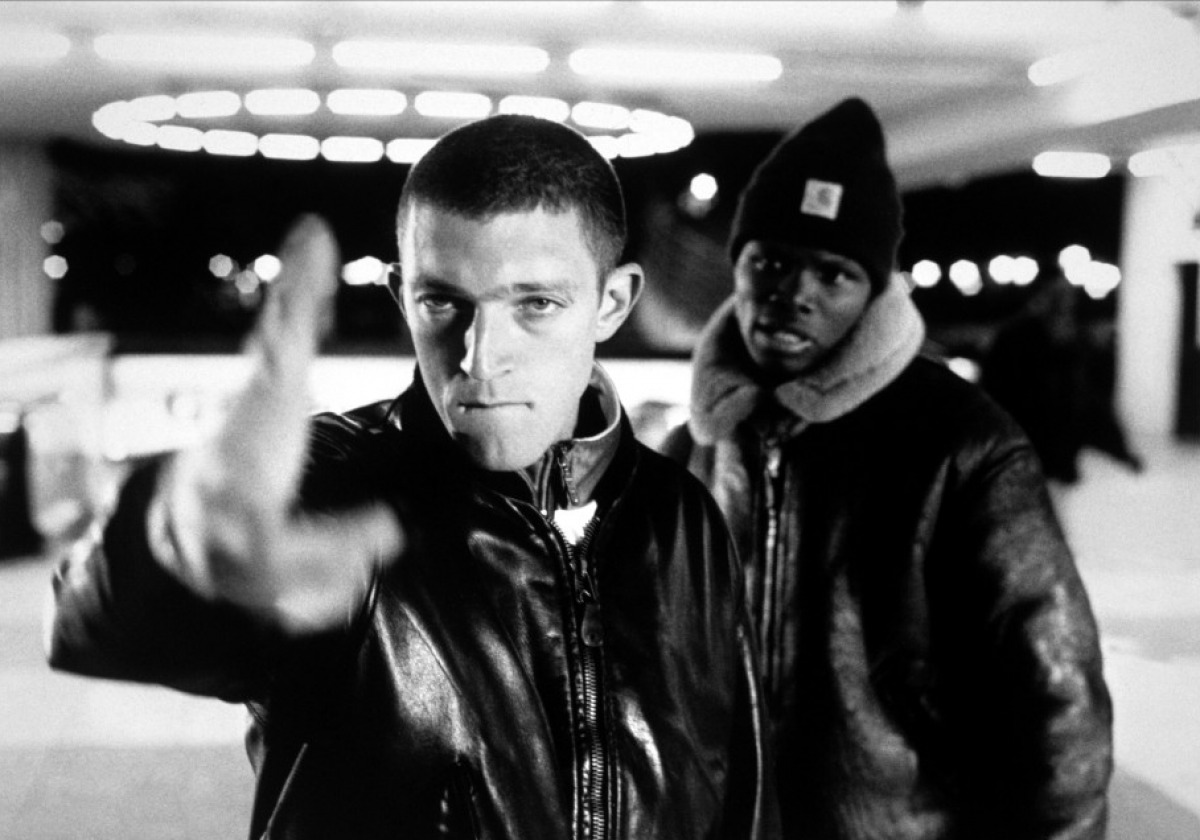
For better or for worse, La haine—alongside other French films such as the directorial efforts of Luc Besson—gave birth to a new niche in French cinema that was marked by its blend of grittiness, classic American cool and explosive visual style that was destined to turn heads on a global scale.
In France, an almost immediate successor to La haine’s gritty social consciousness and hip-hop aesthetic was the film Ma 6-T va crack-er (Ma cité va craquer), released in 1997.
One of the more recent examples of La haine’s cinematic legacy in France is the prison drama Un prophète; which documents a young French-Algerian’s ascent through the ranks of organized crime within the prison system.
The film’s stripped down nature as well as its frank and brutal portrayal of prison life and corruption makes it clear where its cinematic influences lie. Other, more international examples of films dealing with social desperation and racial tensions in the same spirit as La haine are American History X in the United States, and the Brazilian film City of God.
Posted on by Sam Fraser Taste of Cinema – Movie Reviews and Classic Movie Lists
Author Bio: Sam Fraser is a literature-turned-film student at Université de Montréal. He still operates under the illusion that he might one day run into Denis Villeneuve or Xavier Dolan on the métro.
What you thought about La Haine
Film Responses
| Excellent | Good | Average | Poor | Very Poor |
|---|---|---|---|---|
| 11 (31%) | 16 (46%) | 4 (11%) | 2 (6%) | 2 (6%) |
|
Total Number of Responses: 35 Film Score (0-5): 3.91 |
||||
Collated Response Comments
106 members and guests attended the screening of La Haine. There were 35 responses delivering a 33% response rate.
I would like to take this opportunity to thank all of you for being so patient when we realised that there was a small problem with the sound feed on the dialogue track at the start of the film. Also grateful thanks to Pete Graham and Ian Coult for their problem solving on the night. Always a pressure situation when something does not go quite right and their perseverance in ensuring we were able to see this film is to be applauded.
A few of you did not like the film at all and that is reflected both in the score of 3.91 and in some of the comments below. However, Mullholland Drive is still the least popular film of the season with a Film Score of 3.68.
All of your comments are collected below.
“Nearly 30 years on from my first viewing, this film only seems to have grown in relevance. The cinematography is so beautiful, the acting so powerful, and the story so exquisitely told with humour, a lightness of touch and a strong pulse of compassion. Here is all life in its warmth, brutality and ugly absurdity. It's a desperately sad film - and a cry for change - but it's artistry and humanity elevate it into something magnificent”.
“When this first appeared, it had a fearsome reputation as a blistering indictment of the toxic relationship between the urban underclass and the authorities. It had its local equivalents, the denizens of the Stonebridge Estate near where I lived at the time would have recognised it. Viewing it again is revelatory and surprising. It appears more a portrait of masculine comradeship in the face of an at once enervating yet changeable, threatening and potentially violent situation than a solely political diatribe. Just kids in the wrong place with too little constructive to do. The three main characters are beautifully drawn, allowed intelligence and sensitivity while also being boorish and aggressive when pushed. It is stunningly shot in surprisingly classical formats. What is worrying is that the police violence seems far more normalised and less shocking than it did at the time ...it certainly can't compete with the footage from Gaza or the Ukraine. Having said all of which the final frames are breath-takingly depressing. Really excellent in all respects”.
“Funnier than I remember. Great acting. Killer soundtrack. Owes a debt to Spike Lee's Do The Right Thing”.
“Fascinating to see this again after so many years and I kept on thinking of Les Quatre Cent Coups (plus guns), and Spike Lee's Do The Right Thing: I was gripped throughout. The black-and white grittiness of it, how the 3 comrades (?) – not musketeers – present a boiling-over tension with nothing really happening until that final scene. black-and-white to emphasize a constant tension threaded through it, an unglamorous view of poverty and the brashness sometimes thoughtful but angry multi-ethnic dynamics of Said, Vinz and Hubert. The stolen police gun is a constant reminder of the likely violence, but the director presents us with humanity in virtually all of the characters - whether three friends, one sympathetic policeman or the old man in the toilet who warns to keep your 'copains' close. I tried to step around the theme of masculinity- who has the biggest gun 'rod' is in charge. So is this a France gripped by fear mirrored by state oppression? Hubert tells Vinz "La haine attire la haine!" Hate breeds hate and the end seems to characterise that. Godard's Alphaville revisited La haine speaks of France and maybe countless other cities across the world”.
“I thought it needed editing and wish I been as enthusiastic as the reviewer Michael read out! Some bits poignant [when Hubert wanted to escape but got pulled back in so quickly], some bits funny; The sense of anomie definitely came through, but didn't need so long! generally thought it too long and rather repetitive. Kept looking at the clock in the film!!! Hoping...Not my type of film, whatever that is. corpus cristi was superb, as was Official Secret”.
“Very difficult to know how to score this film. It was hard to watch and I did not enjoy it yet I am totally convinced by the excellent film making about the tragic lives lived then, and no doubt now also, by young people doomed by accident of birth and location. They're only income from crime, their only release from taking drugs, and with no apparent way out of the downward spiral. What a waste of human life”.
“Once the sound issues were thankfully resolved I really got into the film and the excellent lead characters and their inter relationships. While based around the social deprivations and injustices of the high-rise suburbs and the rebellion of their multi-cultural residents against this, it was not as grim and violent as I expected and produced moments of real humour and warmth as well as tension and conflict. I suppose it was always going to end dramatically and sadly, with the uncertainty of who shot who in the final stand-off. Thanks for another good choice”.
“Documentary style drama based in housing complex outside city. Poverty, drugs, violence, conflict, human nature vividly depicted, with some comedy. Shocking end. Engrossing but would not wish to view again”.
“What a dreadful film! Just an exposition of profanity, violence and thuggery. WOW! That's new! I've never heard of that before. No subtlety and little need for acting other than scowling and sulking. No human emotions beyond anger and resentment. Perhaps there was some point in depicting life in the Banlieues when the film was made, though I doubt it was new then. But it has little point now with the situation in Gaza and, for instance, the gang warfare in Brent described this week in the papers. An unoriginal, boring, pointless film which I resent sitting through for an hour and a half. Please don't show any more films like this”.
“Not comfortable, but scarily realistic”.
“Excellent ending, watchable but not always enjoyable”.
“Beautifully filmed (adore B&W film) but not always a comfortable watch. Loved the mix of camaraderie and humour against the gritty backdrop of the tension post-riot. Good choice and many thanks for stopping to fix the sound issues”.
“Rather bleak, but it will leave a lasting impression”.
“Powerful”. “Très réaliste”.
“Moving – full of despair. The waste and lost possibility”.
“He is right”.
“Not my kind of film”.
“Wasted lives well portrayed”.
“Powerful ending”.
